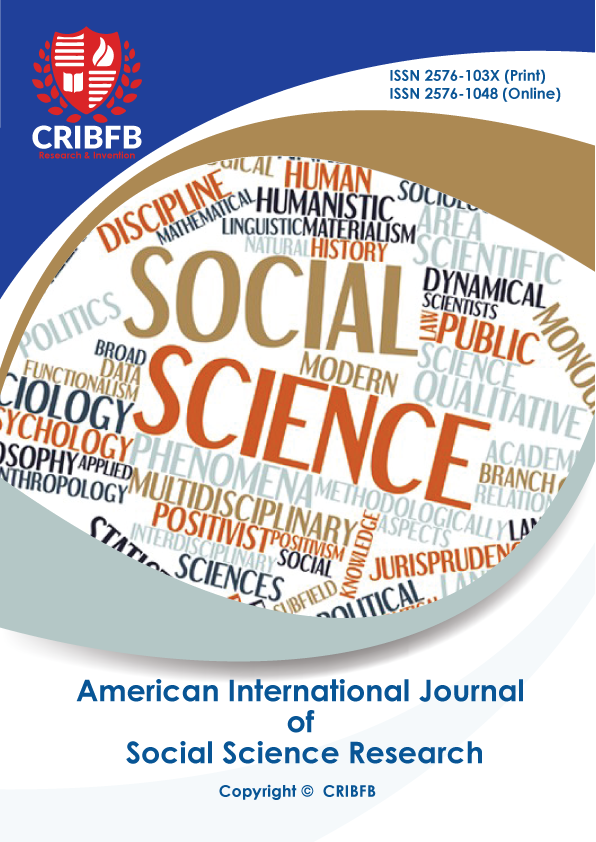TEACHING LISTENING AMONG BANGLADESHI LEARNERS: A CASE STUDY ON TEACHERS’ EFFECTIVE FEEDBACK AND STUDENTS’ SITUATIONAL IMPRESSIONS
Main Article Content
Abstract
Listening centralizes upon the comprehension of messages coupled with pronunciations or sounds from speakers-be they are native or non-native and local or foreigner in the scopes of formal conversation, business talk and classroom lectures in the context of Bangladesh. Bangladeshi learners find listening as a complex and incomprehensible skill of four skills of English language. They often are not able to understand pronunciation patterns and accentual variations used in speeches or conversations. Listening requires systematic strategies in understanding audio or vocal track for which logistic support is highly essential. Managing technical support is at times difficult for teachers and administration because of financial constraints. This study will concentrate on how teachers ensure pedagogical supports and experimental aspects to help learners understand listening effectively with methodological study. This paper will deal with how learners overcome the stages of listening difficulties and comprehend different phonological aspects successfully. In addition, one of the prime concentrations of this paper is to identify impediments of teaching listening, teachers’ inefficiency in listening skill and students’ negligence in achieving mastery on listening.
Downloads
Article Details
Issue
Section
How to Cite
References
Akter, Z. (2006). Redefining ‘Communicative Competence’ in Teaching English as a Foreign Language in Bangladesh. Harvest: Jahangirnagar Studies in Language and Literature, 21, 13-22.
Ara, S. (2009). The contribution of the communicative language teaching approach to teaching writing in the English classroom. Harvest: Jahangirnagar Studies in Language and Literature, 24, 9-26.
Bloomfield, A., Wayland, S. C., Rhoades, E., Blodgett, A., Linck, J., & Ross, S. (2010). What makes listening difficult? Factors affecting second language listening comprehension. MARYLAND UNIV COLLEGE PARK. Retrieved from http://www.google.es/url?sa=t&rct=j&q=&esrc=s&frm=1&source=web&cd=3&ved=0CEgQFjAC&url=htt p://wwwdliflc.edu/file.ashx?path%3Darchive/documents/CASL_study_FINAL_Lit_Rev.pdf&ei=kFfMUu_ vJ8PE0QXVm4HoDg&usg=AFQjCNGUJKlMDBEcB8vygOP4Hd2mh1uIQg
Chen, H. C. (2011). Second language timing patterns and their effects on native listeners’ perceptions. Concentric: Studies in Linguistics, 36(2), 183-212.
Dunkel, P. A. (1991). Listening in the native and second/foreign language: Toward an integration of research and practice. TESOL Quarterly, 25(3), 431-457.
Feyten, C. M. (1991). The power of listening ability: An overlooked dimension in language acquisition. Modern Language Journal, 75(2), 173-180
Goh, C. (2000). A cognitive perspective on language learners’ listening comprehension problems. System, 28, 55-75.
Graham, S. (2006). Listening Comprehension: The Learners’ Perspective. System, 34, 165-182. http://dx.doi.org/10.1016/j.system.2005.11.001
Hamid, M. O., & Baldauf, R. B. (2008). Will CLT bail out the bogged down ELT in Bangladesh?. English Today, 24(3), 16-24.
Harmar, J. (1998). How to Teach English. London: Longman
Hasan, A. (2000). Learners’ Perceptions of Listening Comprehension Problems. Language, Culture and Curriculum, 13, 137-153. http://dx.doi.org/10.1080/07908310008666595
Jahan, A., & Jahan, N. (2008). Teaching Presentation Skills to Tertiary Students in Bangladesh. Stamford Journal of English, 4, 38-57.
Johnson, J. (1994). The National Oracy Project. In Brindley, S. (ed), Teaching English, 31-42. New York: Routledge.
Krashen, S. (1982). Principles and Practice in Second Language Acquisition. New York: Pergammon Press
Littlewood, W. (1981). Communicative Language Teaching. United Kingdom: Cambridge University Press.
Li, W., & Renandya, W. A. (2012). Effective approaches to teaching listening: Chinese EFL teachers’ perspectives. The Journal of Asia TEFL, 9(4), 79-111.
Maniruzzaman, D. M. (2002). Basic English Language Skills. Dhaka: Friends Book Corner. National Education Policy 2010. Ministry of Education. Dhaka: Jubili Publications.
Nunan, D. (1998). Approaches to teaching listening in language classroom. In proceedings of the 1997 Korea TESOL Conference. Taejon, Korea: KOTESOL.
Nunan, D. (2003). Practical English Language Teaching. The McGraw Hill Companies.
Rost, M. (2002). Teaching and researching listening. England: Longman.
Underwood, M. (1989). Teaching listening. London: Longman.
Ur, P. (1995). A Course in Language Teaching. Practice and Theory. Cambridge: Cambridge University Press.
Vandergrift, L., (2004). Listening to learn or learning to listen? Annual Review of Applied Linguistics, 24, 3-25.
Yagang, F. (1994). Listening: Problems and Solutions. In T. Kral (Ed.), Teacher Development: Making the Right Moves. Washington, DC: English Language Programs Division, USIA.




